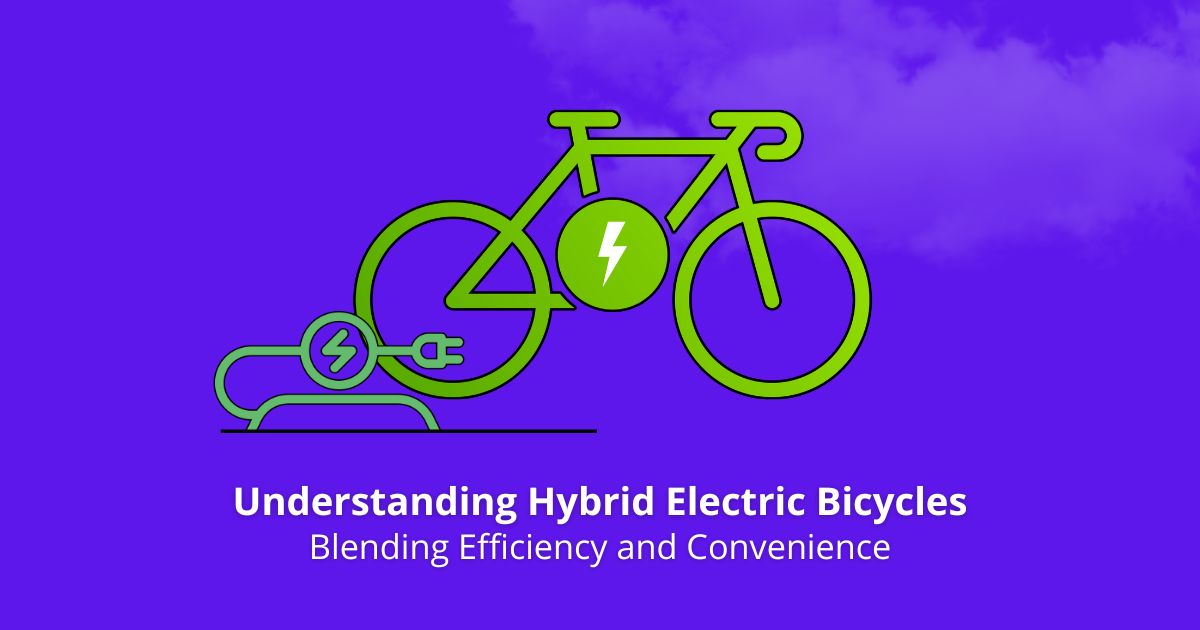Hybrid electric bicycles represent a significant evolution in the realm of personal transportation, combining the benefits of traditional pedal-powered bikes with electric propulsion technology. These innovative vehicles cater to a diverse range of riders, from commuters seeking a reliable and eco-friendly alternative to cars, to enthusiasts who enjoy the flexibility and assistance that electric motors provide.

What Defines a Hybrid Electric Bicycle?
At its core, a hybrid electric bike in the UK, often referred to as an e-bike, integrates both human pedaling power and an electric motor to propel the bike forward. Unlike fully electric bicycles that rely solely on motorized assistance, hybrid models allow riders to choose between pedaling manually, using the electric motor, or a combination of both. This flexibility is one of the primary appeals of hybrid e-bikes, as it offers riders the ability to adjust their effort level according to terrain, distance, or personal preference.
Components and Technology
Hybrid electric bicycles typically feature several key components that enable their dual-mode functionality. Central to their design is the electric motor, usually integrated into the hub of the rear wheel or the crankshaft area. This motor is powered by a rechargeable battery, which can vary in capacity depending on the model and manufacturer. Lithium-ion batteries are commonly used due to their energy density, longevity, and relatively lightweight nature, which is crucial for maintaining the overall balance and maneuverability of the bicycle.
Control systems for hybrid e-bikes vary, with some offering simple pedal-assist modes where the motor activates only when the rider pedals, while others provide throttle-based systems where the rider can engage the motor with a twist grip or button control. Many modern hybrid electric bicycles also come equipped with sophisticated onboard computers or controllers that allow riders to monitor battery life, adjust power levels, and even connect to smartphone apps for additional features like GPS navigation or fitness tracking.
Advantages of Hybrid Electric Bicycles
One of the most significant advantages of electric hybrid electric bike is their ability to make cycling more accessible and enjoyable for a broader demographic. Commuters, for instance, can arrive at their destinations feeling less fatigued thanks to the motorized assistance, while still benefitting from the exercise of pedaling. This can encourage more people to choose biking over driving, thereby reducing traffic congestion and lowering carbon emissions, contributing to a cleaner environment.
For recreational riders, hybrid e-bikes open up new possibilities for exploring challenging terrain or covering longer distances without the fear of exhaustion. Hills that might have been daunting on a traditional bicycle become more manageable with the assistance of the electric motor, allowing riders to maintain a consistent pace and enjoy the ride to its fullest.
Additionally, hybrid electric bicycles can serve as a practical alternative to traditional bicycles for older adults or individuals with mobility issues. The electric motor provides a helpful boost, enabling them to continue cycling comfortably and safely, thereby promoting an active and healthy lifestyle.
Considerations and Challenges
Despite their numerous advantages, hybrid electric bicycles do present certain considerations and challenges. One primary concern is the weight of the bike, which tends to be heavier than traditional bicycles due to the added components such as the motor and battery. This extra weight can affect handling and maneuverability, particularly at lower speeds or when navigating tight spaces.
Maintenance and servicing of hybrid e-bikes also require specialized knowledge and skills, especially concerning the electrical components and battery management. Regular charging and proper storage of the battery are essential to maintain optimal performance and longevity.
From a regulatory standpoint, laws regarding the use of electric bicycles vary by region and country. Some places classify certain types of e-bikes as mopeds or require registration, insurance, and adherence to specific speed limits. It’s crucial for riders to familiarize themselves with local regulations to ensure compliance and safety.
The Future of Hybrid Electric Bicycles
Looking ahead, the future of hybrid electric bicycles appears promising as advancements in battery technology continue to improve energy efficiency and reduce weight. Manufacturers are increasingly integrating smart features and connectivity options into their designs, enhancing the overall user experience and functionality.
Moreover, as urban populations grow and cities become more congested, hybrid e-bikes offer a sustainable solution to transportation challenges. They provide a means of travel that is not only efficient and cost-effective but also promotes personal well-being and environmental stewardship.
In conclusion, hybrid electric bicycles represent a harmonious blend of traditional cycling with modern technology, offering riders a versatile and eco-friendly mode of transportation. Whether for commuting, recreation, or mobility assistance, these innovative vehicles are reshaping the way people think about biking and contributing to a more sustainable future.